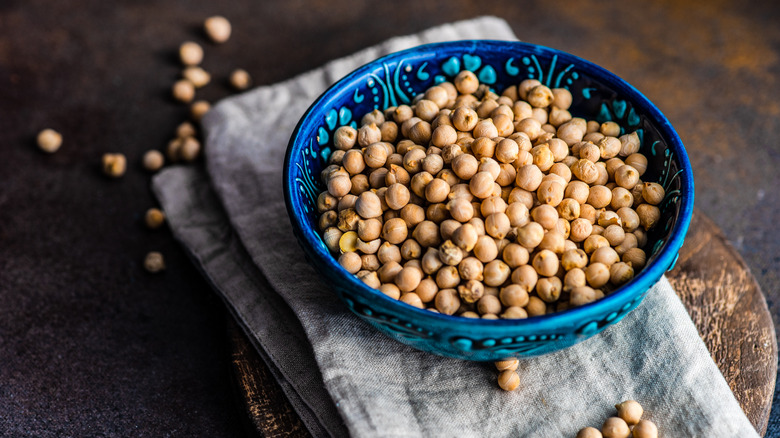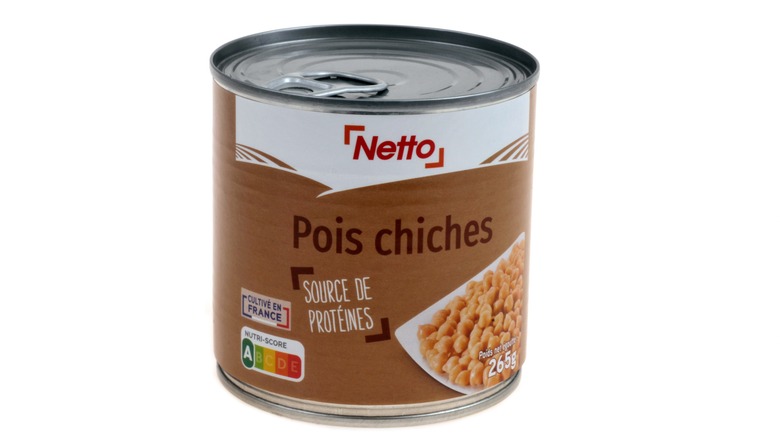Is There A Difference Between Garbanzo Beans And Chickpeas?
Whether you're making homemade hummus or roasting legumes for a salty, crispy snack, you'll find that "garbanzo beans" and "chickpeas" seem to be used interchangeably in recipes. Some manufacturers label cans of them with one name, while others stick to the other. If you're wondering about the difference, here's a clue: Some cans have both names on the label.
That's because garbanzo beans and chickpeas are the exact same thing. Cicer arietinum is the scientific name for this pulse — which is a seed that is eaten from a legume plant. If you're making dinner and your recipe calls for chickpeas but you only have a can that reads "garbanzo beans," you can absolutely use them, as the only difference is the name on the label. The beans inside are identical to a can that says "chickpeas."
Chickpeas and garbanzo beans aren't the only names for this small, beige pulse. They are also known as ceci beans, chana, and garbs in other cuisines around the world. These beans also come in a variety of colors other than the light tan we know so well in the U.S. — including red, black, and even green.
What's with the two different names?
The name "chickpea" actually has nothing to do with chickens (as you might have suspected) and everything to do with it's Latin-derived name, Cicer arietinum. You can see the slight similarities in the word "Cicer" and "chick." In French (which is a romance language, meaning it's derived from Latin), they're called "pois chiche." If you invert the words, you'll find it even more closely resembles "chickpea."
The word "garbanzo," on the other hand, is derived from the Basque word "garbantzu" (a word that translates to "dry seed"), which the Spanish appropriated and turned into "garbanzo." Two different names, two different etymological histories, but they both refer to the same plant.
It is interesting to note, too, that in the U.S., those living in the western part of the country are more likely to use the term "garbanzo beans," while the eastern parts of the country use "chickpea" more often. It does seem, too, that "chickpea" is used more often in marketing, like when referring to gluten-free chickpea pasta or in the titles of recipes.

